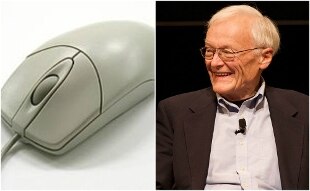Share
01 August 2020 William English, the computer engineer who built the first computer mouse on the basis of the project of his colleague Douglas Engelbart, who died in 2013, died at the age of 91 in San Rafael, California. The death, due to insufficiency respiratory, dates back to July 26 but has only been made known by his wife. The meeting with Engelbart dates back to the late 1950s, when English, the son of an electrical engineer, gave up a career in the navy to enter a Californian research laboratory, the Stanford Research Institute, now SRI International.In an era where only specialists used computers, made of punched papers and typewriter keyboards, Engelbart planned to build a machine that anyone could use simply by manipulating an image on the screen.
The idea behind personal computers at the time, however, seemed bizarre in the computer community. English was one of the few who understood it, and put his skills at the service of an illumination that would change the world. Engelbart imagined a device that could move a cursor on a screen and perform tasks by selecting particular symbols and images (another revolutionary idea: icons). English knew how to put this intuition into practice. The first mouse was a bulky wooden box and a red button in the corner. His debut was the presentation of the experimental computer NLS, which took place in San Francisco on December 1968 and went down in history as "the mother of all demonstrations". Engelbart on stage showed what, projected on a screen, English accomplished with that revolutionary machine: the first programs for the layout of texts, the first videoconference, the first "hypertexts", that is the links, other lighting.
"It looked like a computer interface could - and should - appear," Doug Fairbairn, director of the Mountain View Computer History Museum and contributor to English in the 1970s, told the New York Times.
The pine wood box operated by English contained two potentiometers that traced the movements of the two small wheels at the base of the device. He was called "mouse", mouse, because the cursor on the screen - whose abbreviation was CAT, cat - seemed to hunt him with his movements. A stroke of genius that may have been facilitated by taking LSD. Both English and Engelbart were in fact part of a government test program that aimed to verify how much lysergic acid could "open the mind" and stimulate creativity in already brilliant brains.

